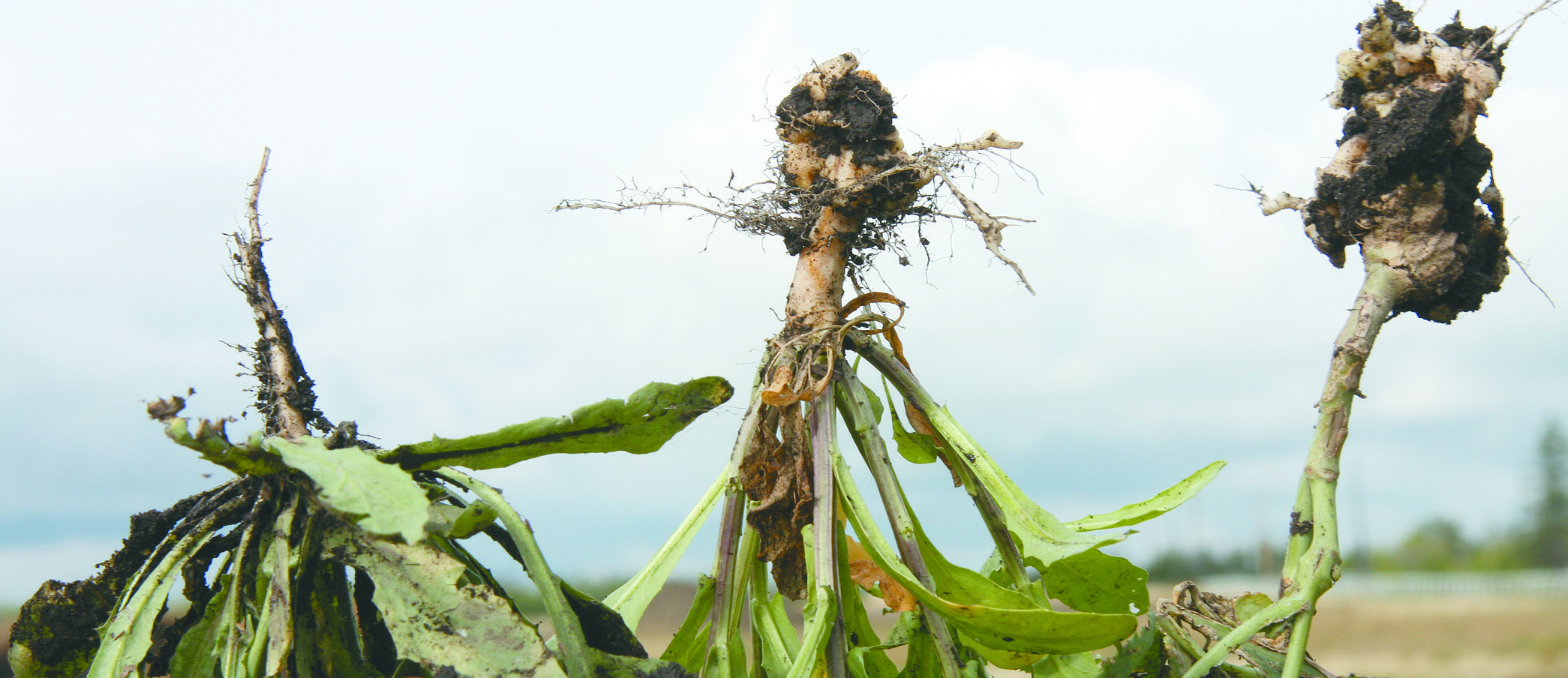Severe losses | The disease, diagnosed 10 years ago in Alberta, is almost impossible to eradicate, says researcher
BROOKS, Alta. — Victor Manolii takes his footwear seriously when doing research in clubroot-infected fields.
The University of Alberta researcher insists on plastic shoe covers for himself and his team and recommends them to anyone stepping foot in more than one field, whether or not clubroot is known to be present.
Potential canola crop losses from clubroot can be severe, even wiping out a crop in some cases.
He described how farmers should scout and test for clubroot infection during a “canola galla” field day July 31.
Read Also

Gene editing digs deeper space in Canadian plant breeding
More Canadian research into crop variety development is incorporating gene editing, and one researcher notes that Canada’s regulatory approach to gene editing will help drive innovation
Field entrances are the most likely spot to find infection. High traffic areas have the biggest risk of collecting infected soil from other fields that are carried on equipment and vehicles.
Canola plants that are stunted or yellowing at this time of year may be showing symptoms of clubroot. Manolii advised farmers to use a shovel to dig up the entire plant.
The telltale bulbous galls on plant roots may break off if plants are pulled, giving the farmer false assumptions.
Clubroot likes moisture, so it’s more likely to be found in low spots. The disease prefers acidic soil, although it has been found in soils with pH ranging from 4.6 to 8.3, so acidity isn’t a reliable guide to susceptibility.
To get a true picture, Manolii recommended testing 10 spots in the field using a ‘W’ pattern. He and his team do their tests in late August or early September, when the crop has been swathed, which limits damage to the crop and allows for easier walking.
Plant pathologist Ron Howard of Alberta Agriculture encouraged canola producers to sanitize farm equipment to limit disease spread.
He recommended a three-step process of scraping off loose soil, using a pressure washer and air compressor and following that with a mist of disinfectant.
Howard said it could take up to three hours to thoroughly clean a large tractor, “but if that’s all that stands between you and clubroot, it’s worth it.”
He said he has seen 300 pounds of soil removed from a four-wheel-drive tractor after work in muddy conditions and 100 lb. from a cultivator.
That amount of soil can contain a lot of clubroot inoculum.
“Clubroot spores are very durable,” he said, adding they can survive freezing and temperatures up to 100 C.
Howard said farmers should be careful when buying used equipment, particularly at farm auctions where no cleaning equipment is available and little might be known about the machine’s origin.
“I’d be going over it with a fine-toothed comb,” Howard said about used equipment bought at auction.
Mobile seed cleaners, custom farm crews, soil testing teams, recreational vehicle users and hunters are also potential sources of clubroot spread.
















